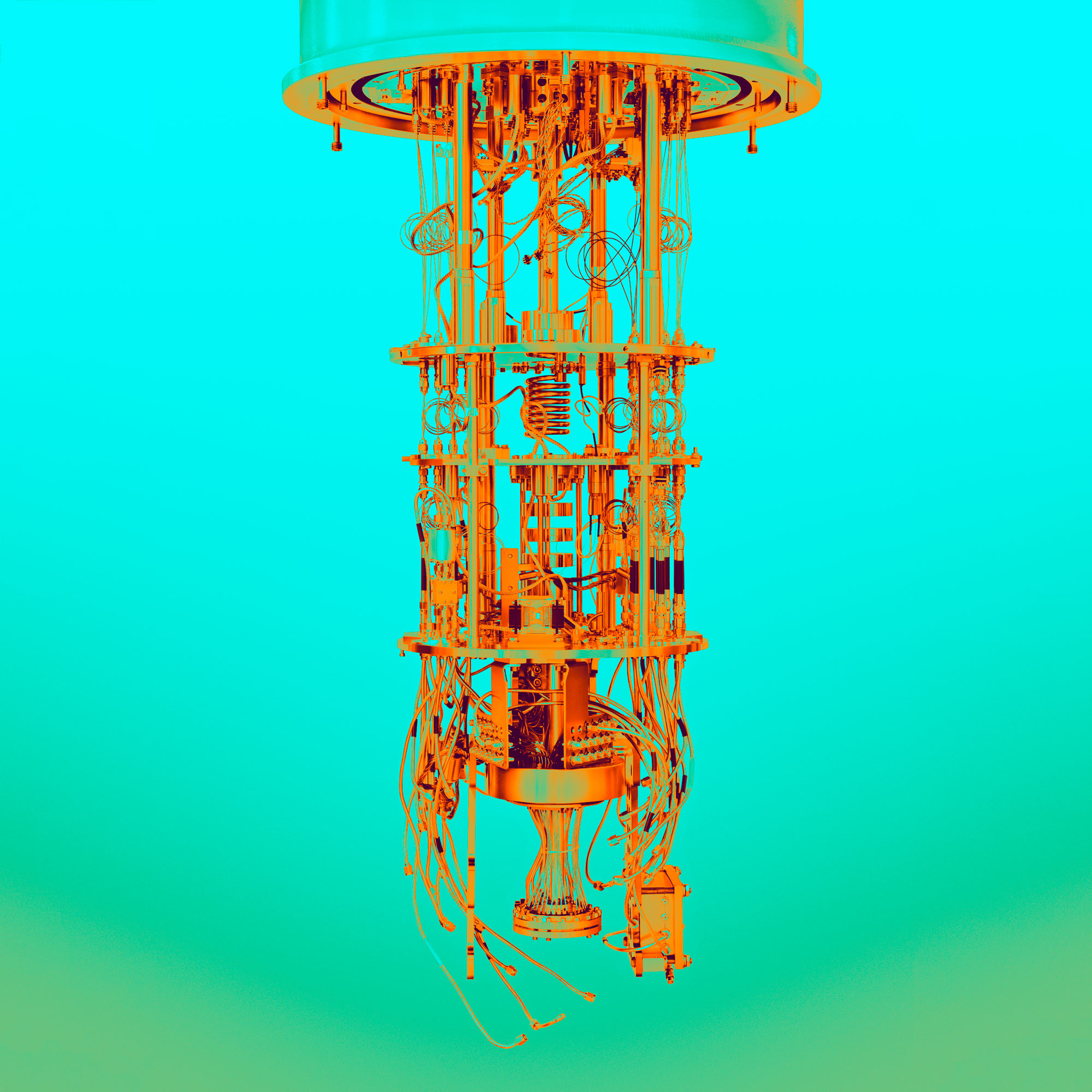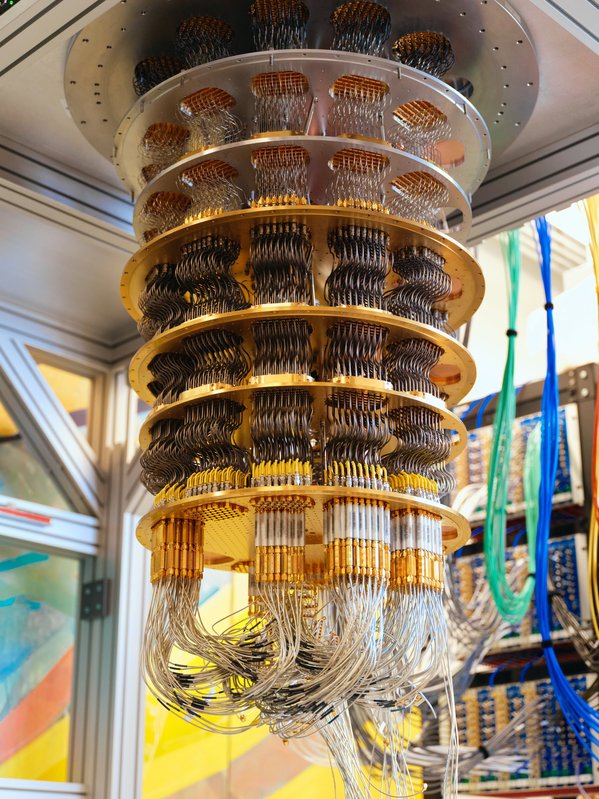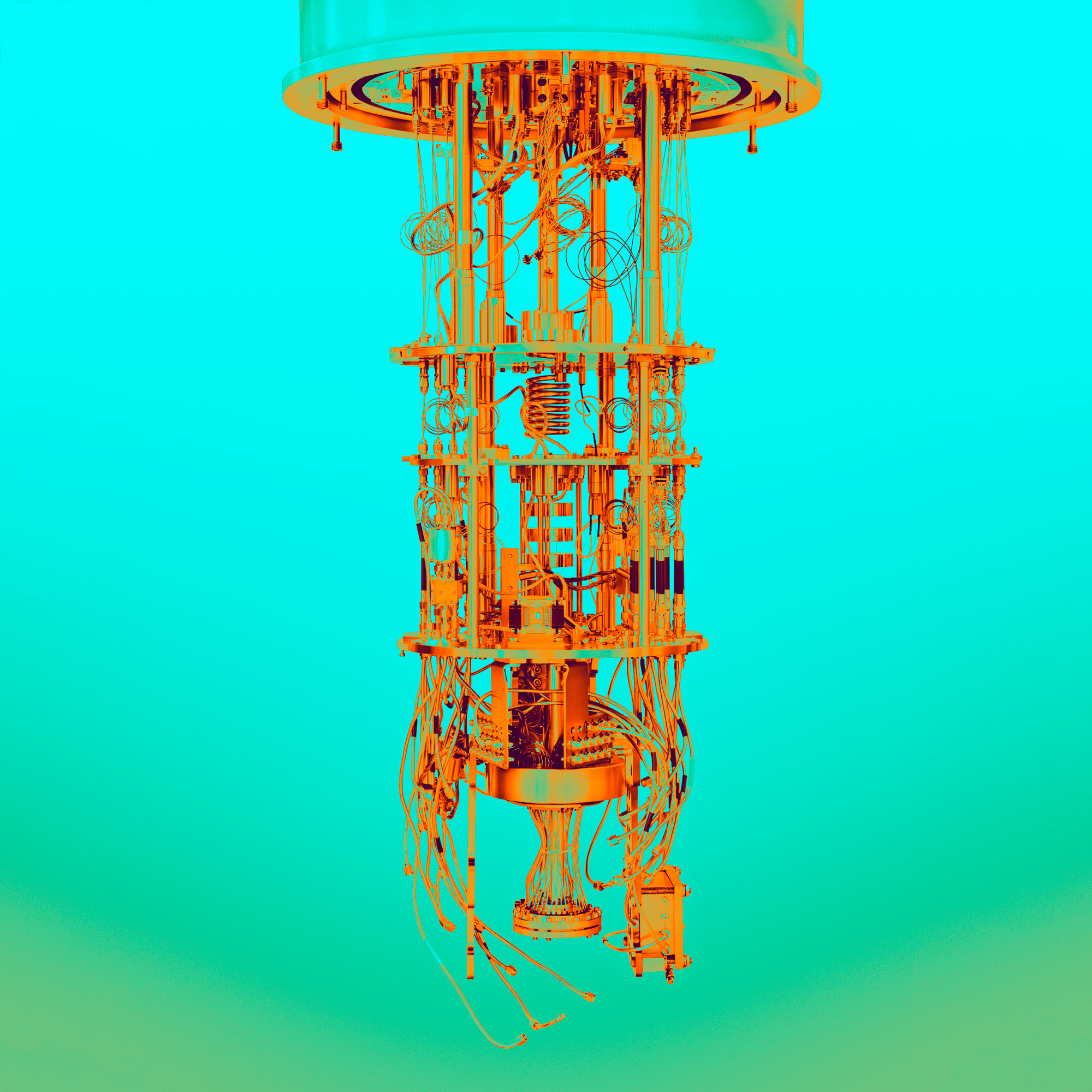A quantum computer looks nothing like your everyday laptop or desktop. Instead, it resembles a complex, futuristic machine straight from a sci-fi movie.
Quantum computers are unlike anything we use today. They are housed in specially designed labs, featuring intricate arrays of wires, tubes, and cooling systems. These machines need to operate at extremely low temperatures, close to absolute zero. This unique design helps them perform calculations at speeds unimaginable with classical computers.
In this blog post, we’ll explore the fascinating structure of quantum computers. We will delve into the components that make them work and the science behind their powerful capabilities. Ready to discover the appearance and inner workings of these marvels of technology? Let’s dive in.
Introduction To Quantum Computers
Quantum computers are unlike any other machines we have seen. They promise to solve problems that are impossible for classical computers. But what do these machines look like? Let’s explore their unique appearance and structure.
Basics Of Quantum Computing
Quantum computers operate on quantum bits, or qubits. Unlike classical bits, which are either 0 or 1, qubits can be both 0 and 1 at the same time. This property is called superposition. It allows quantum computers to perform many calculations simultaneously.
Another key feature is entanglement. Entangled qubits are linked, so the state of one qubit affects the state of another, even if they are far apart. This connection enables faster processing of complex problems.
Comparison With Classical Computers
Classical computers use bits as the smallest unit of data. These bits are represented as 0s and 1s. Quantum computers use qubits, which can exist in multiple states at once.
Classical computers process data in a linear sequence. Quantum computers process data in parallel, thanks to superposition and entanglement. This allows them to solve certain types of problems much faster.
Here is a simple comparison:
| Classical Computers | Quantum Computers |
|---|---|
| Use bits (0 or 1) | Use qubits (0, 1, or both) |
| Process data sequentially | Process data in parallel |
| Limited to classical algorithms | Can solve complex quantum algorithms |
Quantum computers are still in their early stages. But they hold great promise for the future of computing.
Core Components
A quantum computer might look like a futuristic device, but at its core, it consists of a few key components. Understanding these components helps us grasp how these incredible machines work. Here, we will delve into two of the most critical elements: qubits and quantum gates.
Qubits
Qubits are the basic units of information in quantum computing. Unlike classical bits, which can be either 0 or 1, qubits can exist in multiple states at once due to superposition. This means they can be 0, 1, or both simultaneously.
Here are some ways qubits differ from classical bits:
- Superposition: Qubits can be in a combination of states.
- Entanglement: Qubits can be linked, allowing changes in one to affect another.
Qubits can be made from various technologies, such as:
- Photons
- Ions
- Superconducting circuits
Each of these technologies has its own advantages and challenges. Scientists are continually researching to find the best materials and methods.
Quantum Gates
Quantum gates manipulate qubits. They are the quantum equivalent of classical logic gates. Quantum gates perform operations on qubits, changing their states in precise ways.
Here are some key types of quantum gates:
| Gate Type | Function |
|---|---|
| Pauli-X | Flips the state of a qubit. |
| Hadamard | Creates superposition. |
| CNOT | Entangles two qubits. |
Quantum gates are crucial for creating quantum algorithms. These algorithms solve complex problems faster than classical ones. Researchers design quantum gates to be as precise and error-free as possible.
Quantum Processor
A quantum processor is the heart of a quantum computer. It performs calculations using quantum bits or qubits. These qubits can exist in multiple states at once. This property enables quantum computers to solve complex problems faster.
Design And Architecture
The design of a quantum processor is unique. It differs greatly from classical processors. Quantum processors use qubits instead of bits. Each qubit can represent a 0, a 1, or both at the same time. This is known as superposition.
Quantum processors are often arranged in a lattice structure. They use connections called quantum gates. These gates perform operations on the qubits. The architecture must reduce errors and maintain coherence. Even tiny errors can affect the results.
Cooling Systems
Quantum processors need very cold temperatures. They must be close to absolute zero. This is necessary to keep the qubits stable. At higher temperatures, qubits lose their quantum state. This is called decoherence.
Cooling systems use special refrigerators. These are known as dilution refrigerators. They cool the quantum processor to millikelvin temperatures. This is much colder than outer space. The cooling system is vital for the performance of the quantum computer.

Credit: www.technologyreview.com
Quantum Memory
Quantum memory is a vital part of quantum computers. It stores quantum information. This information is held in quantum bits or qubits. Unlike classical bits, qubits can be both 0 and 1 at the same time. This property is known as superposition. Quantum memory ensures qubits remain stable and reliable.
Storage Mechanisms
Quantum memory uses special storage mechanisms. These mechanisms are different from traditional memory systems. One common method is using trapped ions. Ions are atoms with an electric charge. They are trapped using electric fields. This keeps them stable for long periods.
Another method involves superconducting circuits. These circuits operate at very low temperatures. Superconducting circuits help maintain the qubits’ quantum state. This is crucial for accurate quantum computing. Photonic quantum memory is also an option. It uses light particles, or photons, to store information. Each method has its benefits and challenges.
Error Correction
Error correction in quantum memory is essential. Quantum information is very fragile. Errors can occur due to external interference. These errors can disrupt the qubits’ state. Without error correction, quantum computation would be unreliable.
Quantum error correction uses special codes. These codes detect and correct errors. One popular method is the surface code. It uses multiple qubits to protect information. This adds redundancy, making the system more robust. Another method is the Shor code. It corrects errors by spreading information across several qubits.
Effective error correction ensures quantum computers perform reliably. It is a key component of practical quantum computing. By addressing errors, quantum computers can solve complex problems.
Quantum Algorithms
Quantum computers use special algorithms to perform tasks. These algorithms are different from classical algorithms. Quantum algorithms can solve certain problems much faster. They are crucial in understanding the power of quantum computing.
Shor’s Algorithm
Shor’s Algorithm is used for integer factorization. It can break down large numbers into their prime factors. This is important for cryptography. Classical computers take a long time to do this. But Shor’s Algorithm does it quickly.
Here is a simple example:
- Classical method: Factorize 15 into 3 and 5.
- Shor’s Algorithm: Uses quantum bits (qubits) to factorize faster.
Shor’s Algorithm has a big impact on security. Many encryption systems rely on the difficulty of factorization. If quantum computers become common, these systems will need to change.
Grover’s Algorithm
Grover’s Algorithm is used for searching unsorted databases. It can find a specific item in a large list. Classical search algorithms take linear time. But Grover’s Algorithm works much faster.
Here is how it works:
| Classical Search | Grover’s Algorithm |
|---|---|
| Checks each item one by one | Uses quantum superposition |
| Time complexity: O(N) | Time complexity: O(√N) |
For example, searching through 1 million items:
- Classical search: Up to 1 million checks
- Grover’s Algorithm: Around 1,000 checks
This makes Grover’s Algorithm very useful. It can speed up search tasks in many fields.

Credit: quantumai.google
Physical Setup
Understanding the physical setup of a quantum computer can be quite fascinating. Unlike classical computers, quantum computers require a specialized environment and equipment. Let’s explore the laboratory environment and the importance of shielding and isolation.
Laboratory Environment
A quantum computer operates in a controlled laboratory environment. This environment must be free from external disturbances. The room is often kept at extremely low temperatures. This helps to reduce noise and interference.
Inside the lab, you will find various sophisticated equipment. This includes dilution refrigerators to cool the quantum processor. There are also multiple layers of shielding to protect the delicate quantum bits or qubits.
To manage the cooling and shielding, the lab is equipped with:
- Temperature sensors
- Vibration isolation tables
- Electromagnetic shielding
Shielding And Isolation
Shielding and isolation are crucial for a quantum computer’s performance. Qubits are highly sensitive to their environment. Any external noise can cause errors.
To prevent this, quantum computers are often placed inside special rooms. These rooms have thick walls and are shielded against electromagnetic interference. This ensures the stability of the qubits.
Moreover, isolation is not only about electromagnetic shielding. The computer also needs to be isolated from vibrations. Even small vibrations can disrupt the quantum state.
The key components of shielding and isolation include:
- Faraday cages
- Magnetic shielding
- Vibration-damping systems
By maintaining these conditions, a quantum computer can function effectively. This ensures accurate computations and reliable results.
Visual Appearance
Quantum computers are nothing like the everyday laptops we use. Their unique design is intriguing and complex. Let’s delve into the visual appearance of these fascinating machines.
External Structure
The external structure of a quantum computer is often large and imposing. Unlike conventional computers, they are housed in special environments. These environments maintain precise conditions for optimal performance.
Most quantum computers are encased in cryogenic systems. These systems are necessary to keep the quantum bits, or qubits, at extremely low temperatures. The outside of these systems looks like large, shiny cylinders, often made from metal. These cylinders are designed to shield the qubits from external disturbances.
Another important part of the external structure is the control room. This is where scientists and engineers operate the quantum computer. The room is filled with cables, control panels, and diagnostic screens. It looks much like a high-tech laboratory.
Internal Components
Inside a quantum computer, you’ll find the heart of the machine: the quantum processor. This processor is often a small, delicate chip. It is made from materials like superconductors or trapped ions.
Surrounding the quantum processor are the cryogenic cooling systems. These systems keep the processor at temperatures close to absolute zero. This is crucial for the qubits to function correctly.
Another key component inside is the quantum control electronics. These are specialized circuits and devices that control the qubits. They send and receive signals, enabling the processor to perform calculations.
Here is a table summarizing the main internal components and their functions:
| Component | Function |
|---|---|
| Quantum Processor | Performs quantum calculations |
| Cryogenic Cooling Systems | Maintains low temperatures for qubits |
| Quantum Control Electronics | Controls and reads qubits |
In addition to these, there are various wiring and connections that link the components. These connections are often made from superconducting materials to ensure minimal resistance and interference.
The internal setup is highly organized but extremely intricate. It requires precise engineering and expertise to maintain and operate.

Credit: www.technologyreview.com
Future Prospects
The future of quantum computing holds much promise. With rapid advancements and potential applications, the possibilities seem endless. As technology evolves, quantum computers may become a part of our daily lives. This section explores the prospects of quantum computing.
Advancements In Technology
Quantum computing technology is constantly evolving. Researchers are making strides in creating more stable qubits. This progress helps in reducing errors and increasing efficiency. Improved qubit coherence times are a major focus.
Developing better quantum algorithms is another key area. These algorithms can solve complex problems faster than traditional ones. Enhancements in error correction techniques are also crucial. They help in maintaining the integrity of computations.
Quantum hardware is becoming more sophisticated. Innovations in cryogenic cooling systems are vital. These systems maintain the low temperatures needed for qubits to function. More compact and integrated quantum chips are also being developed.
Potential Applications
Quantum computing has the potential to impact various fields. Here are some key areas:
- Cryptography: Quantum computers can break current encryption methods. They can also create unbreakable encryption.
- Drug Discovery: Quantum simulations can speed up the discovery of new drugs. They can model complex molecules accurately.
- Optimization Problems: Quantum algorithms can solve optimization problems efficiently. This is useful in logistics and supply chain management.
- Artificial Intelligence: Quantum computing can enhance machine learning. Faster data processing can lead to better AI models.
Environmental modeling is another promising application. Quantum computers can simulate climate models with high precision. This can help in predicting weather patterns and understanding climate change.
Financial modeling can also benefit. Quantum algorithms can analyze large datasets quickly. This can lead to more accurate financial predictions.
In the field of materials science, quantum computing can aid in discovering new materials. This can have implications for various industries, including electronics and energy.
The future of quantum computing is bright. With ongoing advancements, its potential applications are vast. As technology evolves, quantum computers will transform many fields.
Frequently Asked Questions
What Is A Quantum Computer?
A quantum computer is a powerful machine that uses quantum bits (qubits) for processing. It can solve complex problems much faster than classical computers.
How Does A Quantum Computer Work?
A quantum computer works by leveraging principles of quantum mechanics, such as superposition and entanglement. These principles allow it to perform multiple calculations simultaneously.
What Are Qubits In Quantum Computing?
Qubits are the basic units of information in quantum computing. Unlike classical bits, they can exist in multiple states simultaneously, enabling faster processing.
What Are The Benefits Of Quantum Computers?
Quantum computers can solve complex problems in minutes that would take classical computers years. They have potential applications in cryptography, materials science, and optimization.
Conclusion
Quantum computers look different from traditional ones. They are often large and complex. These machines use quantum bits, not classical bits. The technology is still developing. Many scientists are working hard to make it better. Quantum computers promise faster problem-solving.
Their potential is vast and exciting. We may see big changes in technology soon. Stay tuned for more advancements in this field. The future of computing looks bright with quantum technology.










